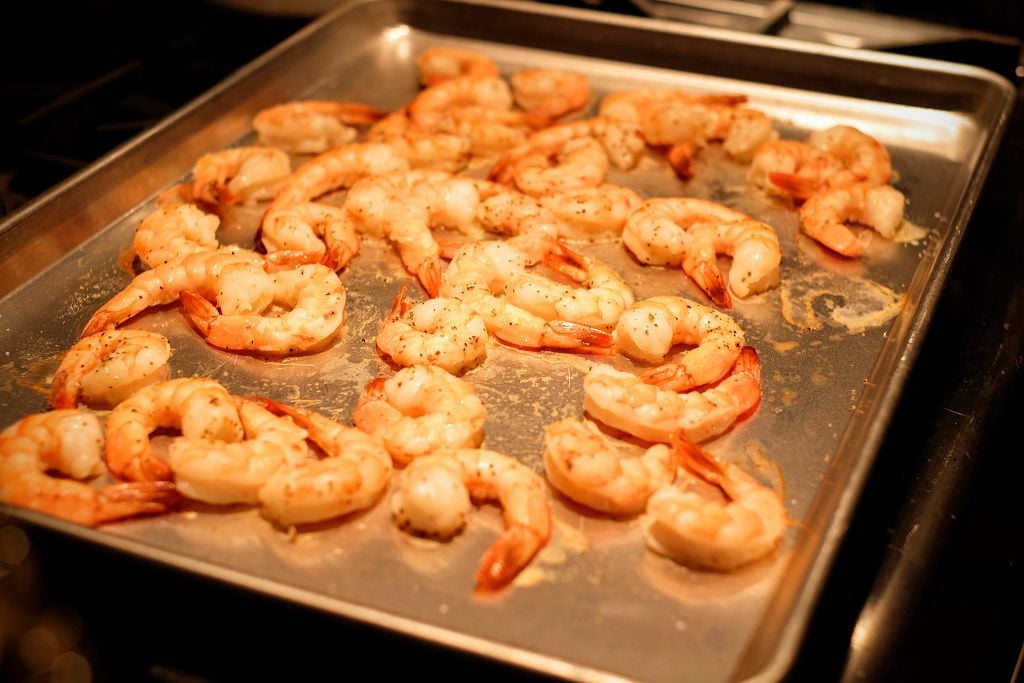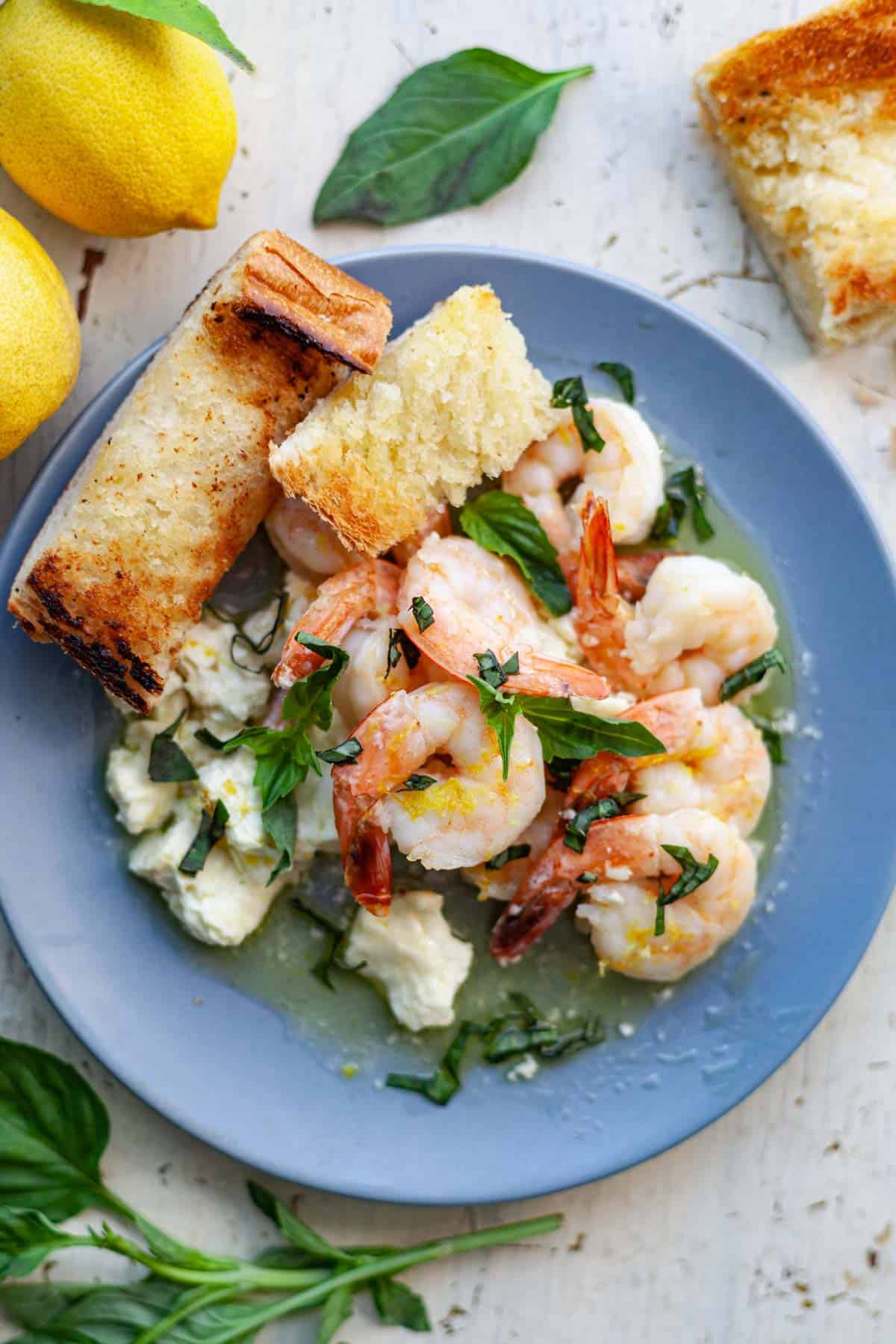If you need to reheat shrimp leftovers, follow these simple and helpful guidelines for perfectly flavorful reheated shrimp.
However, it is possible to reheat shrimp without drying it out. Below are the best ways to reheat shrimp.
Steamed shrimp is a delicious and healthy meal, but like most leftovers, it can be tricky to reheat properly. Overcooking shrimp leads to rubbery, chewy texture that ruins all the beautiful flavors
After steaming up a batch of perfect shrimp at home or getting takeout, you want to be able to enjoy those leftovers later without compromise
In this ultimate guide, you’ll learn the best techniques for reheating steamed shrimp to maintain moisture, texture and taste. Let’s dive in!
Before we get reheating, let’s start with a quick primer on steaming shrimp at home.
Steaming is one of the quickest, easiest cooking methods for shrimp. It takes just 2-3 minutes to cook the shrimp perfectly without any complicated techniques.
Simply season raw, peeled shrimp with salt, pepper, garlic, lemon or any other desired seasonings. Place them in a steaming basket or colander and set over a pot of boiling water.
Cover and steam for just a couple minutes, until the shrimp turn pink and become firm. Immediately remove from the steamer and serve.
Steaming locks in moisture and brings out the inherent sweet, briny flavor of fresh shrimp. It’s also a very healthy cooking technique that doesn’t require any oil or butter.
The only trick is avoiding overcooking which can make the shrimp rubbery. That’s why steaming time is so short – shrimp cooks very fast.
Now let’s look at how to revive steamed shrimp leftovers using a few simple reheating methods.
Tips for Reheating Steamed Shrimp
Reheating steamed shrimp presents a paradox – you need to get the shrimp hot again without continuing to cook them.
Here are some tips to reheating steamed shrimp properly:
-
Use a gentle reheating method – Steaming, poaching or pan frying are gentle ways to reheat that won’t overcook the shrimp. Avoid intense direct heat like grilling or broiling.
-
Reheat at medium-low temperatures – Medium-low heat is sufficient to warm the shrimp through without seizing up the proteins. High heat can make shrimp rubbery.
-
Only reheat until just warmed – Shrimp cooks very quickly, so heat it only until warmed through, about 2-3 minutes maximum. Check for doneness frequently.
-
Keep reheating time short – Limit reheating time to preserve moisture and texture. Shrimp can go from perfectly cooked to overcooked in seconds.
-
Use a little fat or liquid – A small amount of butter, oil or broth in the reheating method adds moisture and prevents the shrimp from drying out.
-
Let shrimp rest before serving – Let steamed shrimp sit for 2-3 minutes after reheating so heat distributes evenly throughout each piece.
Follow these tips and you’ll have leftover steamed shrimp that tastes amazingly fresh! Now let’s look at some simple reheating methods.
How to Reheat Steamed Shrimp
Here are three easy ways to revive leftover steamed shrimp without overcooking.
On the Stovetop
Reheating steamed shrimp on the stovetop is quick and easy. Here’s how:
-
Heat 1 tsp oil or butter in a skillet over medium-low heat.
-
Add the steamed shrimp in a single layer and cook for 1-2 minutes, gently turning halfway through.
-
Once shrimp are warmed through, remove from heat and let rest 2-3 minutes before serving.
In the Oven
For a larger batch of shrimp:
-
Preheat oven to 300°F.
-
Spread steamed shrimp on a baking sheet in a single layer.
-
Mist with a little water or broth and cover the sheet tightly with foil.
-
Heat in the oven for about 5 minutes until just warmed through.
Poached
You can gently reheat shrimp by poaching:
-
Heat 3-4 cups of water, broth or wine to a bare simmer in a pot.
-
Turn off heat and add shrimp to poach for 1-2 minutes until heated through.
-
Remove shrimp with a slotted spoon and serve.
No matter which method you use, err on the side of underheating rather than overheating steamed shrimp. You want it just warm, not piping hot throughout.
With these techniques, your leftovers will taste freshly-steamed!
What to Avoid When Reheating Shrimp
On the other hand, there are a few reheating methods you’ll want to avoid:
-
Microwaving – The microwave produces intense heat that quickly overcooks shrimp, leaving them rubbery.
-
Direct dry heat – Grilling, broiling, sautéing without oil will all rapidly overcook shrimp.
-
High heat – Excessive heat toughens the proteins in shrimp. Keep temperatures medium-low.
-
Prolonged heating – Don’t leave shrimp reheating for more than 2-3 minutes max. Check frequently for doneness.
-
Insufficient moisture – Lack of steam, oil or broth can lead to dry, chewy reheated shrimp.
As long as you steer clear of these shrimp-ruining practices, you will have delicious results!
Serving Ideas for Reheated Shrimp
Once you’ve revived steamed shrimp leftovers, there are so many delicious ways to serve them:
- Toss with pasta or rice noodles
- Make tacos or lettuce wraps
- Mix into fried rice or stir fry
- Pile on salad or make shrimp cocktail
- Add to soups, stews or chowders
- Stuff into sandwiches or wraps
- Top pizza, nachos or flatbread
- Mix with mayo or sauce for shrimp dip
With so many possibilities, you’ll look forward to leftovers!
Storing Steamed Shrimp
To make the most of your perfectly steamed shrimp, it’s important to store them properly after cooking. Here are some storage tips:
- Let shrimp cool completely before storing.
- Place shrimp in an airtight container.
- Refrigerate within 1-2 hours of cooking.
- Use within 3-4 days for best quality and safety.
- Freeze for longer storage up to 3 months.
Follow these guidelines and your shrimp will stay fresh and delicious when it’s time for reheating!
Frequently Asked Questions
Let’s wrap up with answers to some common questions about reheating steamed shrimp:
How long does reheated shrimp last?
Leftover reheated shrimp will keep for 3-4 days refrigerated. Discard any shrimp that smells, looks or tastes off.
Can you reheat cooked shrimp more than once?
It’s best to only reheat cooked shrimp once. Multiple reheats deteriorate texture and moisture.
What is the best way to reheat a shrimp dish?
For a saucy, mixed shrimp dish, reheating in the oven helps keep the shrimp tender.
Is it safe to reheat shrimp?
Yes, as long as shrimp is promptly refrigerated after cooking and reheated within 3-4 days to 165°F, it is safe to reheat.
Should you add liquid when reheating shrimp?
A small amount of oil, butter or broth helps keep reheated shrimp moist. But don’t overdo it.
How do you keep reheated shrimp from drying out?
Use gentle heat, limit reheating time, and add a little fat or liquid to prevent drying and rubbery texture.
Enjoy Perfectly Reheated Shrimp
Armed with this guide, you can confidently reheat leftover steamed shrimp for a freshly steamed taste every time.
The next time you have an amazing shrimp dinner, go ahead and cook extra with reheating in mind.
Follow the storage, gentle reheating methods and serving ideas in this article to get the most enjoyment out of your shrimp, even as leftovers. Happy reheating!

Answers to All Your Questions About Reheating Shrimp
My favorite method is the first one in the blog post above: a gentle simmer on the stovetop. This way is nice because the heat is low, and the shrimp warm up quickly in the liquid without getting dry.
I find that the microwave makes cooked shrimp very rubbery. If you need to heat up shrimp in the microwave, cover the dish and heat it for as little time as possible.
Ideally, reheat the rice or pasta separately then add the shrimp back in. The reheated rice or pasta will gently warm the shrimp. Otherwise, you can either use the oven method or the stovetop sauté method in the blog post above. Add a little water to the rice or pasta either way, and cover the pan to keep the water in. You may need to add a little butter or oil after the dish has been heated through.
You can heat up breaded shrimp in a toaster oven or cook them in a pan with a little oil. Dont add liquid or use a lid, it will just make the coating soggy.
Overcooked shrimp curl into a tight “C shape. The texture is dry and rubbery.
Foodsafety.gov says shrimp are fully cooked when the “flesh is pearly or white, and opaque.” Look for the color to change from grayish and translucent to an opaque white, and the pinkish parts will get darker. Shrimp cook very quickly, often in just a few minutes. The thickest part of the shrimp, where it curves on the back, is the part to watch. When that turns opaque and white, the shrimp are done.
If the raw shrimp were fresh to begin with and were cooked to a safe temperature, cooked shrimp will stay good for about 4 days in the fridge. When you cook shrimp, reheat it, then put it back in the fridge and reheat it later, that’s not a good idea.
And dont forget, shrimp is delicious cold. Sometimes the best solution is to eat leftover shrimp without reheating it at all!.
The Best Way to Reheat Shrimp
A gentle reheating method that keeps shrimp moist is the best way to reheat cooked shrimp. I find that the stovetop usually works best.
However, no matter what cooking method you use for reheating shrimp, keep these two tips in mind:
- Add liquid: water or broth keeps the shrimp moist while it heats up.
- Cover the shrimp: For some ways of reheating, like in the oven or microwave, cover the shrimp tightly to keep the moisture in while it reheats.
Option 1: Gentle Simmer This stovetop method works well if youre reheating cooked shrimp without any other ingredients.
- Put about 2 inches of broth or water in a sauté pan. Tip: To make water taste better, add a pinch of salt, a squeeze of lemon, or a splash of white wine.
- Heat the liquid until its almost beginning to boil. Something hot, but not boiling, is what you want.
- Turn off the heat.
- Just put the shrimp in the liquid long enough to heat it up (this should happen quickly).
Option 2: Saute. This is a good way to cook shrimp that you don’t want to simmer in liquid or that you want to mix with other foods.
- Put a large sauté pan over medium-low heat and add a lot of oil.
- Once the oil is hot, add the shrimp and other things.
- Slowly cook the shrimp and other ingredients until they are mostly hot.
- Turn off the heat and put the lid on the pan for the last minute or two to keep the food moist while it finishes heating up.
I sometimes use the oven if Im reheating a large amount of shrimp and other ingredients.
- Heat oven to 300 F
- Place the shrimp in a single layer on a baking dish or sheet pan with a lip. Ideally, heat other ingredients in a different baking pan.
- Some warm water should be added to the baking sheet.
- Cover the sheet pan tightly with foil.
- Heat for about 10 to 15 minutes
If you have to, you can heat shrimp with other foods in the same baking dish. However, the shrimp will likely finish heating up first, and if you leave them in the oven for too long, they will get dry and overcooked.

